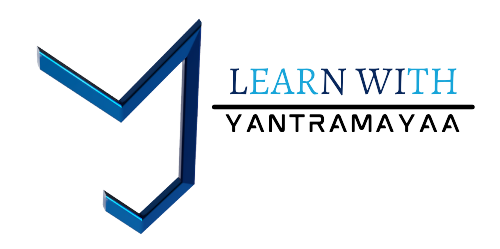Curves and Surfaces
1)Types of surfaces
The surfaces entities are mainly of two types:
1. Analytic Surfaces: The surface entities which are defined by analytic equations are known as analytic surfaces.
examples: Plane surface, Ruled surface, Tabulated surface and surface of revolution
2. Synthetic Surfaces: The surfaces which are defined by a set of data points are known as synthetic surfaces.
examples: Bezier surface, B-Spline surface, Fillet surface, Offset surface and Coons patch.
Analytical Surfaces
Plane Surface:
- Plane surface is defined by three non-coincident points.
- It is the simplest surface.

Ruled Surface:
- Ruled surfaces are formed by two boundary curves which are wire frame entities.
- The corresponding end points of the two boundary curves are joined by straight lines and the surface in between is obtained by linear interpolation.
- This is the linear surface and does not permit any twist.
- Also known as Lofted surface.

Tabulated Surface:
- A tabulated surface is generating by translating a planer curve to a certain distance along the direction perpendicular to the plane of the curve.

Surface of Revolution:
- It is an axisymmetric surface rotating a planer wireframe entity in a space about the axis of symmetry through a certain angle.

Synthetic Surfaces
Bezier Surface:
- It is a synthetic surface which is approximated by given data points.
- Though the surface does not pass from the given data points, it is controlled by the data points.

B-Spline Surface:
- It is a synthetic and general surface like the Bezier surface.
- It allows the local control of the surface in addition to global control.

Coons Patch:
- It is the surface created by using the curves that forms closed boundaries.

Fillet Surface:
- It is the blend of two surfaces which interacts with each other.
- Fillet of specified radius provided at the intersection of two surfaces wherever required.

Offset Surface:
- An existing surface can be offset to create a new surface.
- The offset surface is identical on shape with the existing surface but may have the different dimensions.

2)Explain feature based modeling
Definition: It is the construction of geometries with the combination of features.
Basically, there are 3 steps included in feature based modeling which are:
- Sketch: To sketch a 2D surface
- Applying feature: Applying feature to that surface according to requirement
- Combining features: Features are combined or subtracted to form the final model as a result
Examples of Features: Extrude, Hole, Thread, Fillet, Cut, Scale, etc.
3)Differentiate between Hermite Cubic Splines curves and Bezier curves
| Hermit Cubic Spline Curve | Bezier Curve |
|---|---|
| Represented by polynomial of degree three | Represented by polynomial of nth degree |
| Degree of polynomial is independent of number of data points | Degree of polynomial is dependent on the number off data points |
| Two data points and two tangent vectors at the ends are required | Two data points at ends and one or more control points in between are required |
| Control of shape of curve is not very convenient | Control of shape of curve is convenient |



No responses yet